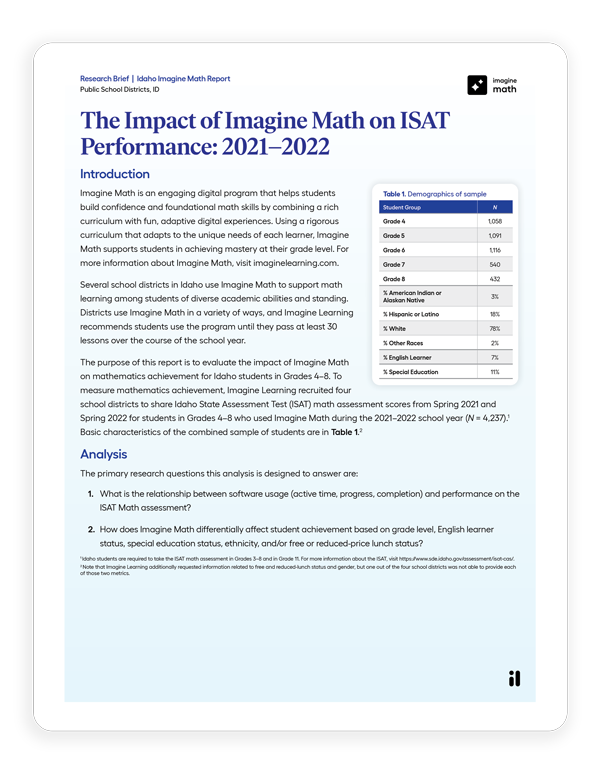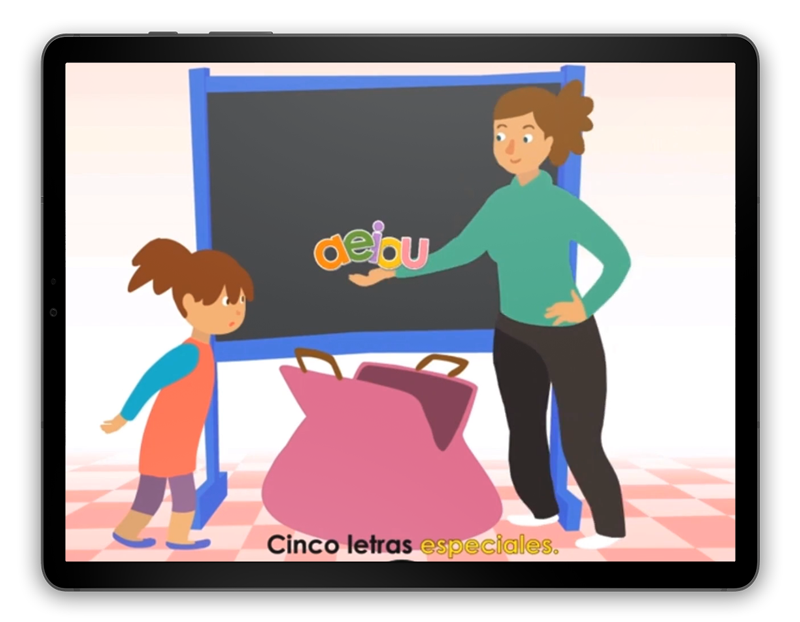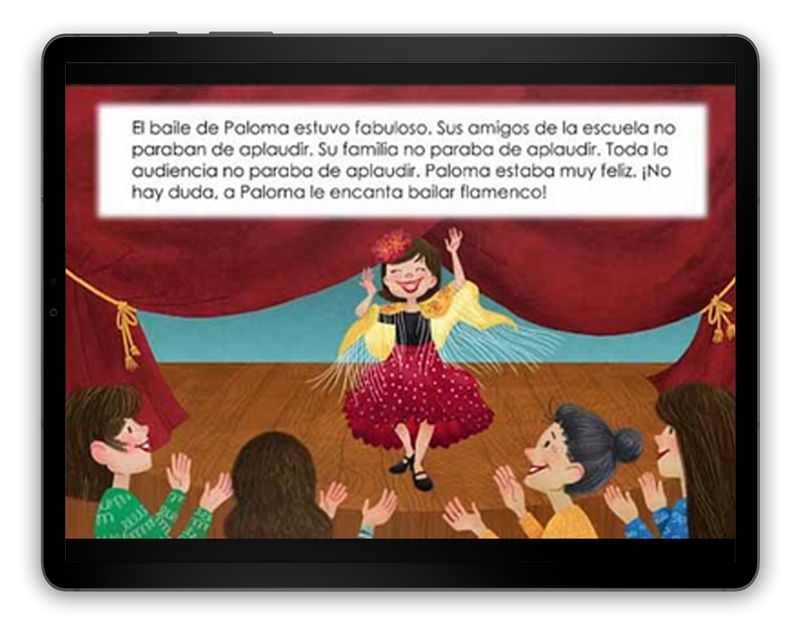November 3, 2023 7:00 am
The Science of Math Instruction: Incorporating Research-Based Instruction into Technology
Everyone’s talking about the science of reading, but what about mathematics? Take a look at agreed-upon best practices called cognitively-guided instruction, as well as technology that puts it into practice.
Teaching mathematics means more than introducing algorithms and procedures to students. Research shows that effective instruction also involves the development of a student’s conceptual understanding, mathematical reasoning, and problem-solving skills.
One research-based approach to mathematics instruction is Cognitively Guided Instruction (CGI), as described in Children’s Mathematics: Cognitively Guided Instruction (Carpenter et al., 2014). CGI shifts an educator’s focus away from direct instruction and toward understanding an individual student’s mathematical thinking. The teacher then leverages this understanding as the foundation to guide the student toward increasingly complex concepts.
Now, as online programs gain popularity in today’s classrooms, schools have the opportunity to choose technology that not only supports students’ procedural fluency but also aligns with research-based principles to develop students’ conceptual understanding. By evaluating the technology we bring to students through the lens of a framework such as CGI, we can help ensure that students have the opportunity to develop the skills they need to succeed beyond memorization.
What is Cognitively Guided Instruction (CGI)?
CGI is an approach to teaching mathematics that focuses on students’ critical thinking and problem-solving. Instead of just showing students how to solve a problem, teachers guide students to explore strategies and approaches that make sense from their unique understanding of a situation. The following are just some of the principles of CGI, as highlighted in Children’s Mathematics (Carpenter et al., 2014).
- Problem Solving: Students are encouraged to tackle problems using critical thinking and creativity before receiving direct instruction. Given a story problem anchored in a real-world context familiar to students (such as sharing a food item among friends), students reason using a strategy of their choice.
- Teacher as a Facilitator: Teachers transition away from the role of traditional instructors and toward the role of facilitators. They listen to students’ strategies, pose thought-provoking questions, and steer discussions while providing opportunities for students to learn from their peers’ thought processes.
- Building on Prior Knowledge: Students bring their experiences and understandings into the classroom. Teachers leverage each student’s prior knowledge as a foundation and layer new concepts on top of the ideas that students have already grasped.

Applying CGI to Online Learning
When designed with research-based principles in mind, online programs have the ability to increase accessibility to effective instruction. For example, the following characteristics of various online programs provide the flexibility to support CGI practices.
- Adaptive Learning Environments: Adaptive learning environments powered by algorithms can provide students with a personalized learning experience that caters to their unique needs and preferences. By analyzing a student’s performance and feedback, online platforms can generate customized content tailored to their strengths and weaknesses. This approach to learning aligns with CGI’s emphasis on personalized education, which recognizes that every student has a unique learning style and pace.
- Virtual Manipulatives: Utilizing virtual tools, such as base-ten blocks, offers students an interactive experience to experiment with variables and visualize outcomes. This approach enables them to select the appropriate device that aligns with their current understanding and apply critical thinking and creativity to solve a given problem.
- Real-world Problem Solving: Online platforms can offer practical problem-solving exercises that mirror real-life challenges. This approach aligns with cognitively guided instruction’s emphasis on applying mathematical concepts to everyday situations. By bridging the gap between theory and practical significance, students can gain a deeper, contextual understanding of mathematics and its relation to the world around them.
By incorporating CGI practices with online platforms’ capabilities, we can anchor each student’s learning experience in student-centered, data-driven instruction.
About the Author – Erin Springer
Erin Springer is a former elementary school teacher who transitioned to supporting other teachers as a Professional Development Specialist at Imagine Learning. She is enthusiastic about helping teachers use educational technology to improve student outcomes, save time, and understand students’ needs.
Citations:
Carpenter, T. P., Fennema, E., Franke, M. L., Levi, L., & Empson, S. B. (2014). Children’s Mathematics: Cognitively Guided Instruction (2nd ed.). Heinemann.
Imagine Learning. (2023, June 20). New Study Reveals Significant Gains in Student Math Performance with Imagine Math [Press release]. https://www.imaginelearning.com/press/study-reveals-significant-gains-student-math-performance-imagine-math/






